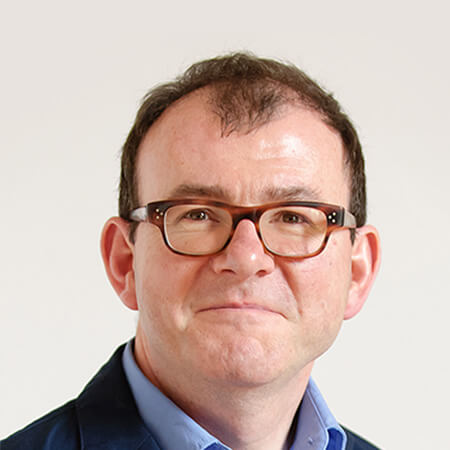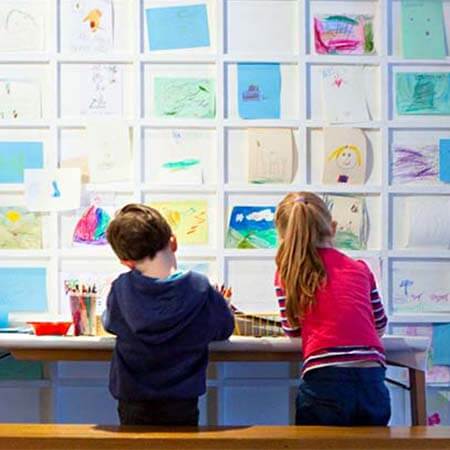Jane Jacobs, the doyenne of urban planning, believed that the success of any city owed a lot to the “intricacy of pavement use, bringing with it a constant succession of eyes”.
She wrote, in The Death and Life of Great American Cities: “There must be eyes upon the street, eyes belonging to those we might call the natural proprietors of the street. The buildings on a street equipped to handle strangers, and to ensure the safety of both residents and strangers, must be oriented to the street. They cannot turn their backs or blank sides on it and leave it blind.”
However, what happens when the residents and strangers are themselves blind to their surroundings, always in a hurry, their eyes on their phones? Or when the streets are simply empty? The residents, young and old, sequestered indoors, behind a computer screen?
The non-profit creating A Playful City for citizens
A Playful City is all about the intricacy of pavement use. This non-profit is the brainchild of Aaron Copeland and Neasa Ní Bhriain of Upon a Tree, a creator of outdoor play spaces, and Naomi Murphy and Marisa Denker of Connect the Dots – a community events organiser. They’ve come together to… well, what exactly?

Design meets play: Aaron Copeland, Neasa Ní Bhriain, Marisa Dencker and Naomi Murphy.
“To bring playfulness back out onto the streets of our city for all generations of people,” says Neasa.
To do this, they use community-supported initiatives like A Playful Street to remind adults how they used to play in the streets themselves. Or through low-cost playful activations in Dublin’s community spaces, like lanes, pathways and, of course, streets.
You should feel like the city is for you, rather than just something you walk through…
“These types of spaces in a city not only support children’s development, but also become important scenes for uplifting social interaction within a community,” says Neasa. “Something which is fast disappearing in today’s society.”
Marisa chimes in: “I think the actual experience of being in your city should feel like the whole city is engaging with you and surprising you – you should feel like the city is for you, rather than just something you walk through, eyes down, as you get from one place to the other.”

Images courtesy of Paul Kelly, North Wall Series.
The changing habits of city dwellers
A big driver behind A Playful City is the declining number of Dubliners who spend time out on the city’s streets – particularly children, but also adults.
“People are all indoors and the city isn’t a part of people’s lives in the way it could be,” says Marisa. “There are so many studies about children and playfulness and the importance of going outside and the value of this as children grow up. And while the studies are mainly about children, I think the same applies to adults and the elderly as well.”
You can just see their eyes light up.
The team have run consultations on this topic with older people at St. Andrew’s Resource Centre on Pearse Street. Even simply discussing the games they used to play in the city’s streets can energise them.
“You can just see their eyes light up,” says Marisa. “They started getting out of their chairs to show me the conkers games they used to play.”
What would support their development most is to play freely.
As they see it, many of Dublin’s parents and grandparents have forgotten that they themselves had vast opportunities to play freely outside when they were young.
“Children today are being scheduled into classes outside of school from a very young age,” says Neasa. “When really what would support their development most is to play freely and independently outside in their communities.”
Creating a city for everyone to enjoy
A Playful City believes that if it designs Dublin’s streets for children, it will benefit people of all ages and abilities. That’s because they work with people and for people to make changes that will benefit communities as a whole.

“At the heart of it is this co-consultation element,” explains Marisa. “So we’re consulting with people of all ages to learn what play means to them and looks like to them: what they’d like to see.”
Finding inspiration at home and abroad
A Playful City is Ireland’s first not-for-profit focused on creating more playful, engaging and inclusive cities for local communities. However, the innovative ideas that it advocates and implements aren’t new.
“The kind of things that are spontaneous and delight you are what I love. I saw that when I visited Berlin,” says Marisa. “I just loved being there. You’d walk around a street corner and see like five random chairs, rocking chairs, and it’s like: ‘Why not?’.”
We get people feeling like the city cares for them – and for all people.
When she was younger, Marisa also went to school in Philadelphia. There, she experienced pop-up events, markets, surprise street fairs, unexpected public seating and even random art installations.
It’s these kind of initiatives that A Playful City want to bring to Dublin. However, its the people of Dublin who drive their activities first and foremost.
“Just the act of people being asked what they want in their city and then seeing it happen is a really valuable thing,” Marisa says. “It’s getting harder to be listened to. Involving children in the planning process for cities helps to address this.”
It’s getting harder to be listened to.
For her, play is not necessarily the ultimate goal. She believes meaningful consultation and engagement can help communities address a lot of the challenges they face.
“We get equality, inclusivity,” she says. “We get people feeling like the city cares for them – and for all people.”
For more information, visit A Playful City’s website.


